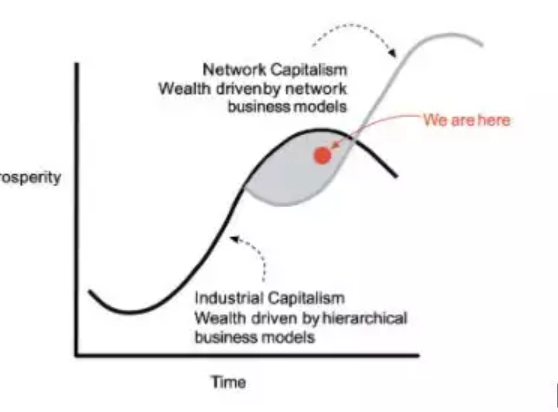As several Enterprises today sit at the wrong end of the S-curve after which businesses may become stagnant, or decline, the primary lever for growth to the next iteration of the S-curve is Digital Transformation.
2021, the year that dawned upon with hope, perseverance, belief, and maturity to deal with the New normal, has demonstrated the role of technology as a way of life, at an individual as well as at an Enterprise level.
At this juncture, where workforce and Business environments are uncertain and pose unprecedented challenges, it has become critical for Enterprises to migrate from “People driven” to “Process-driven”, through a Digital Makeover.
In the last 20 years, there have been several large and prominent Enterprises who have lost ground as they were not able to innovate consistently as per market needs. Some of these include Xerox, Nokia, Gillette, and Kodak, to name a few. There are several elements in a business environment that push businesses to keep innovating and reimagining their offerings for their customers. Some of these elements are technology evolution, competition, consumer preferences, among many others.
The recent advent of Covid-19 has posed the biggest set of challenges that people and Enterprises could think of and be prepared for. However, Enterprises that were equipped with technology, and process digitization were able to better manage this impact and switch to a Digital mode of operations. For others, Digitization and Technology became the most important functions to be able to cope up and survive.
Many Enterprises fail to differentiate between Research & Development (R&D) and innovation. However, enterprises today are able to differentiate better and are able to comprehend and appreciate the impact innovation makes on an organization vis-à-vis the role of R&D. R&D being an intrinsic function for conventional businesses, usually yields incremental benefits to businesses, and is primarily restricted to the people involved in R&D. However, innovation, not only acts as a function, but also as a mindset for the whole organization tree, and has a wider spectrum of impact from Process, to Product, to Service, to Business Model, and the expected magnitude of impact is disruptive rather than incremental.
This also showcases how the recent challenging business and economic environment have pushed Enterprises having lower technology adoption, and digital maturity to re-evaluate and reimagine their business. Enterprises are today able to gauge the possibilities technology integration may bring in, not only to solve their current problem statements, but also to think of new opportunities, whether it is in the form of a product, service, or Business model.
As several Enterprises today sit at the wrong end of the S-curve (Refer Figure 1) after which businesses may become stagnant, or decline, the primary lever for growth to the next iteration of the S-curve is Digital Transformation.
From a balance sheet lens, innovation has the potential to outweigh the cost with the benefits it yields for the business. In today’s age of innovation, where Entrepreneurship has taken a centre stage, there are several technologies and innovative Digital solutions being developed by Startups globally, which reduces the need for Enterprises to re-invent the wheel. It is rather more important today for Enterprises to evaluate and leverage frameworks that work for them to effectively work with Startups, and derive business impact. Through this framework mechanism, Digital Transformation may become a prologue to long term success for Enterprises, as innovation once integrated, has a knack of becoming a mindset and hence permeate to the employees of the Enterprises, who start to think as Intrapreneurs.
Several Digital technologies such as Artificial Intelligence, Internet of things, Blockchain, Big Data, Virtual reality, Augmented reality, Robotics, and automation, among others have the potential to transform the way businesses function, as they are able to transform various functions of the value chain such as logistics & supply chain, manufacturing, engineering, marketing, customer service, Corporate management / support functions. Further, these technologies are adaptable by multiple industries such as Healthcare, Food & Beverage, Manufacturing, Services, FMCG, Mobility, Hospitality, and many more.
The following are key steps to be taken by Enterprises today to Digitally transform their tomorrow:
- Identify the Digital Maturity of your key employees.
- Look into the technologies being currently used across various functions in the Enterprise.
- Cull out current problem statements.
- Prioritize the problem statements to be solved.
- Evaluate a framework to identify, test, measure and integrate Digital technologies.
- Once a framework is identified and implemented, make it an iterative process.
- Make it a mindset for the Enterprise.
Published on Economics Times
